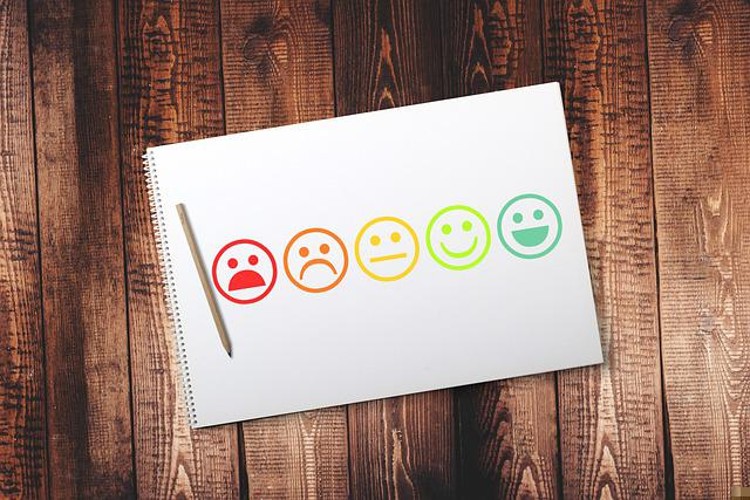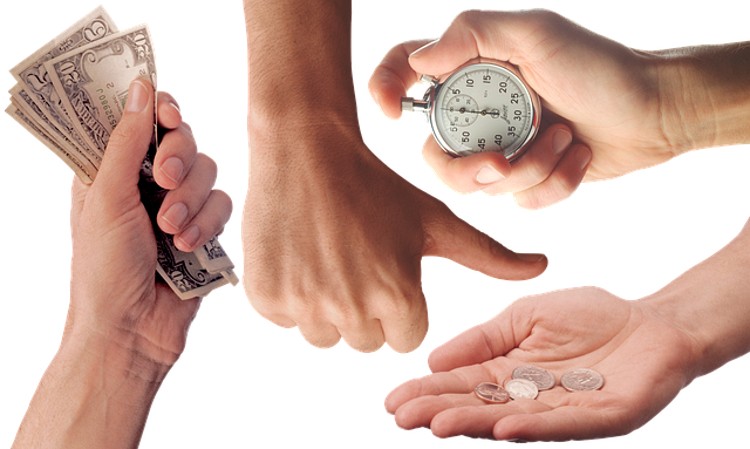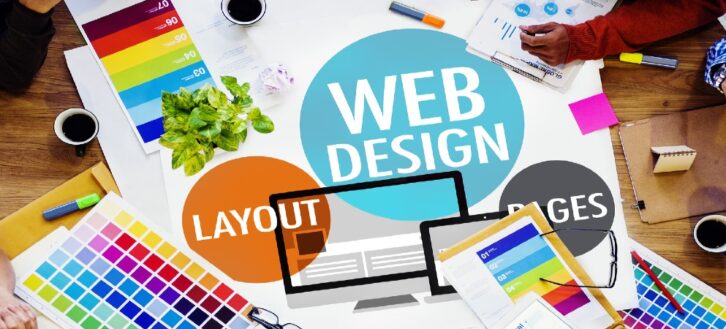Are you looking for ways to boost conversion rates on your website? How would you feel if we told you you already have all the tools you need to accomplish this goal? Conversions depend on many different factors, but they all revolve around one thing – customer experience. The better the experience is, the more likely customers are to convert. “Customer experience” is one of those phrases that gets tossed around so easily without people understanding what it is and how it affects your business. With that in mind, today, we will talk about how your website affects customer experience and the role of web design in conversion rates. At the end of this article, you should have enough understanding of the topic, and you should be able to make all the necessary changes that will boost the conversion rates.
What is customer experience?
When a person has a desire or a need, they will do everything they can to fulfill it. When they cannot do it on their own, they will seek the help of others. This is a generic view of how desire pushes people to satisfy their needs, but this process is at the core of the shopping industry today. It all starts with the drive.
When buyers need something, they will search for the best place to buy it. After looking at a couple of options, they will pick their favorite and reach out to a vendor. Here is where they go through the process of researching customer reviews, looking at prices, product quality, and many different things that will get them closer to purchasing a product.
Once they commit to a purchase and get the product, their desire is fulfilled, and they get to use the product. If the experience has been positive, the customer will return for a second purchase.

This is considered a customer journey, from the moment they have a desire to the moment they discover a business and make a purchase. As a business, it is your job to improve this customer experience. Because if the customer experience is good, the conversion rate will go up.
How can you influence customer experience and make it better?
While there are many different strategies you can try, what we want to focus on today is web design. If you think about it, the first thing any customer will do when they discover a business is to visit its website. In most cases, this is the first actual contact.
With that in mind, let’s talk a bit more about the role of web design in conversion rates and how you should do web design to increase traffic. We want to cover some essential principles that will help you to avoid making web design mistakes that will result in a lower conversion rate.
Too many options increase the decision time
Something that people like to do when shopping is to change their minds. A vast array of factors affect every decision before making a purchase. Furthermore, people can also be indecisive about things. As a business, you need to help them make the right decision as quickly as possible. The more options you offer, the more time it takes for a user to make up their mind. This is known as Hick’s Law.
It is the same thing with web design. When a user visits your website, they have a purpose. They might want to read about the product, find out a piece of information, or they already came with the intent to buy.
The web design should be simplistic and straightforward, and it should eliminate all the distractions and options. It should quickly lead customers from point A to point B. But, if they have to click through A.1, A.5, and so on, they will spend much more time navigating the website than making a purchase. Also, they are more likely to lose patience and change their mind.
When we talk about limiting decisions in web design, there are a couple of things to consider:
- the number of pages;
- the number of subpages in the navigation menu;
- defining required pages vs. bonus pages;
- the ease of navigation from page to page;
- the amount of relevant content on every page.
You can add a welcome screen on your website if you want to go further. It usually covers the entire width and height of the screen, and it has just a single CTA button with one option. This is usually to sign up for a newsletter, collect contacts for leads, or even visit the pricing page immediately. It depends on what you want to push on your clients as the first step.
Design your pages with “the rule of thirds” in mind
The rule of thirds is a crucial concept in web design. It originated as a photography principle, but today it also translates to web design. According to this rule, you should split a web page into three sections, both vertically and horizontally, so that you get a grid like the one you would draw for a game of tic tac toe.

Once you have your vertical and horizontal lines in place, you will notice that they create four intersections in the middle. These are your strategic places of interest where you want to put the most critical elements of a web page.
If you analyze landing pages or pages with CTA buttons using this principle, you will notice that the CTA button and the page headline always fall on these intersections. That is where the user will focus their eyes the most. Furthermore, if you think about the position of the elements, that is where they get the biggest focus. And you need that focus to be on the right elements because it directly affects the conversion rate.
Web design affects the loading speed
Another critical element of web design that significantly affects the conversion rate is the loading speed. People are very impatient, at least the majority of people are. With the advancement of online technologies, everyone expects a lightning-speed service. Even the slightest drop in the loading speed of a web page will bring down the conversion rate. People quickly lose patience when they wait.
Knowing that, how can you affect the loading speed of your website? You can do it in a couple of ways from a web design perspective.
The first thing that comes to mind is image optimization. While it is crucial to have high-quality images, you need to optimize the size for web use. You cannot have pictures the size of a couple of MB on your pages; that will take too much time to load. Hosting your images on a CDN server is also a good idea to speed up the server load time.
Also, you need to optimize your code. When the page starts to load, there is a specific order in which the code is processed. If JavaScript on your page is up at the top, the browser will first spend time loading the script and then load the page. However, if you put JavaScript at the bottom of your code, the page will load much faster. Keep in mind that web design also affects SEO. Optimizing your code also plays a massive role in indexing your website.

Another idea is to declutter your website. Remove unnecessary elements from the page, and the page will load faster. Also, you can reduce the number of plugins, widgets, and ads.
Furthermore, some websites are built using animation to create a more dynamic experience. Animation is fine as long as it is balanced. It can often be too much, especially if you add sound and other visual non-static elements. That will be too much for the browser to load quickly and users to process.
Negative space in web design and why it makes things better
The concept of negative space is so important that you cannot build a website without it. We primarily focus our attention on the things that are on the webpage, so we forget to look at the empty space that divides the elements. That is the negative space.
Imagine you are writing an article. You write paragraph after paragraph, add images and links, and all of that without a single break line. You get an endless and boring wall of text.
Or, you are creating a gallery with images, but there is no space between images; they just stand one next to another.
These are a bit exaggerated examples, but that is intentional. You need empty space between the elements to make things easier to process. In reality, that negative space is the reason why vital elements have the biggest focus on the page. There is nothing around them to avert the attention of the users.
The choice of colors is important
Colors affect our minds and judgment on a conscious and subconscious level. There is so much meaning in colors, especially in web design, that we could talk about that on its own.
Colors tie directly to emotions and can trigger different reactions from your users. If you dive into the topic of web design, you will discover many different color palettes and patterns that you can use. The choice mainly depends on the nature of your website and what kind of emotion you want to trigger.

Colors also have a deeper meaning, which can change from culture to culture. For example, in western culture, black is usually associated with death and mourning. However, people in China wear white at funerals, not black. This is just one example of how the choice of color may change depending on who your clients are.
Another thing to consider when we talk about colors is contrast. There are colors of the opposite spectrum that combine well together and create a fantastic contrast. For example, white combines well with colors like black, orange, and purple. However, if you combine yellow and white, you will see that the combination is not the best one. The contrast is too low, and things will become unrecognizable.
Using wrong colors on your website will seriously lower customer experience, which will reduce the number of conversions. Even when creating content for video marketing, you want to be very careful with your choice of colors and the tone of the video.
What is the 8-second rule in web design?
It seems like there are so many rules in web design that it becomes too complex to keep up. We have already mentioned that users can be impatient. The 8-second rule means that you have an average of 8 seconds to capture your users’ attention. Anything longer than that, and you have lost a customer. This tiny window of opportunity is what dictates such strict rules about web design. If you only have 8 seconds to make an impression, it makes sense that you cannot waste space on your website by adding unnecessary elements and stealing focus from the more critical parts of your pages.
Knowing that, how can someone use web design to capture a user’s attention in under 8 seconds?
The first thing to do is to think about the headline. It needs a large font and must be eye-catching and exciting. Second, you can use powerful words that will capture users’ attention, usually something that addresses a problem they have.
You also need to use vivid images that convey the purpose of the words in the headline. It is also a good idea to use pictures that show other people because that creates a personal connection with users. People can relate more quickly if they see a person’s face.
The sign-up button should be large, easily recognizable, and simple—no need to experiment by creating something unique and out-of-the-ordinary. A button is a button, and people must relate to its purpose. If you want to improve it, you can also add hover effects, so the button pops up more.

Additionally, you can incorporate video materials to make the page more dynamic. Just remember, it is essential to find balance. Too many elements reduce the negative space, and the page load time increases.
Create a sense of similarity on your website
Another vital principle to take a look at is the Gestalt design principle. It explains that people are more likely to perceive a unified design over single components that make up the design. People love patterns, and our eye is trained to find them anywhere around us.
That is why you need to design your pages by creating similar patterns for users. They need a sense of familiarity even if they visit a page for the first time. Too many different designs on a single website will only confuse the user and avert their attention to the less important things.
Instead, you should focus on making elements of the design work together and complement each other.
If you achieve this, you will also improve the user experience, leading to more conversions.
Website accessibility
When doing web design, it is imperative to make your website accessible for people with disabilities. It is an essential part of web design, but it is still relatively fresh in the design world. All people deserve a chance to experience the website in the best possible way. However, some are unable to do so.
Your goal is to use web design to create a seamless experience even for people who struggle with perceiving the world differently.
Your website needs to be responsive and optimized for mobile devices
As a last piece of advice, we have to discuss web responsiveness. Users use different types of devices to browse the internet. It is crucial to optimize your website for different devices, especially mobile. This is a vital part of web design and has become a norm in today’s web design world.
The role of web design in conversion rates made simple
We hope you now understand the role of web design in conversion rates. These elements create a single picture, a unique experience for every client. That experience drives the users to learn more about the business and the products, eventually turning them into returning customers. Web design is so versatile in what it can achieve, from influencing people’s minds to conveying messages, providing visual satisfaction, and much more. It is a complex process, and it is best to look for professional help when revamping your website. Just be patient, and take your time. It is essential to do things the right way, not to rush through the process and make mistakes. Best of luck!
About the Author
John Cramer is a web design expert and content creator for MoversTech CRM. With over 15 years in the business, John uses his passion for writing to help people learn web design and improve their businesses.


